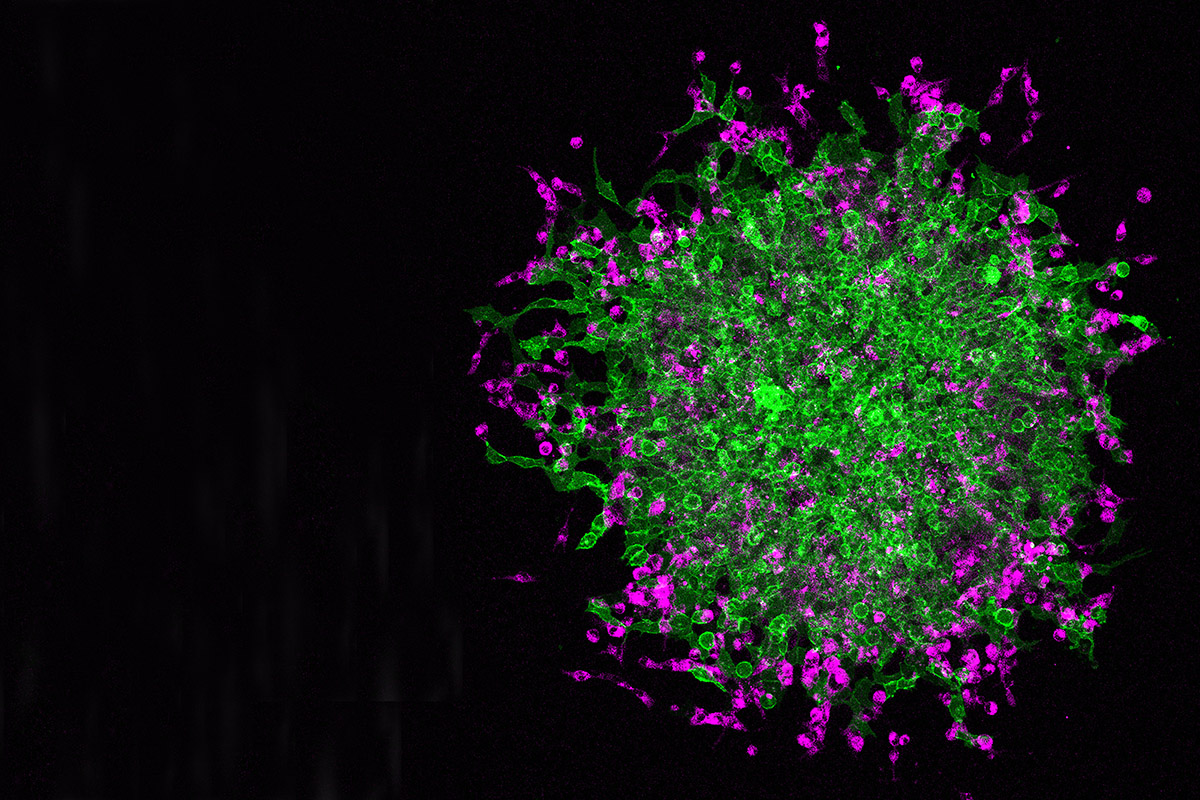Follow the (Purple) Leader

Invasive cancer cells are marked by distinctive mutations.
Adam Marcus and colleagues from Winship Cancer Institute have developed ways to track mutations that are specific to “leader” or “follower” cells.
Specifically, they have identified a leader-specific mutation affecting Arp3, a protein complex that plays a key role in cell motility. “This suggests that this mutation could be involved in driving the invasive behavior of leader cells,” says Marcus.
The researchers took the mutated Arp3 protein from leader cells and forced its production in follower cells. In this image, the magenta cells on the outside are the ones with the mutated Arp3 protein, while the green cells are unmodified.
“This is an important step toward elucidating the biology underlying the leader and follower behaviors within a tumor,” says Marcus. “As we further dissect the mechanisms that drive cancer cells to become leaders or followers, we can better develop strategies to target this rare yet invasive population.”
The research, published in the Journal of Cell Science, was conducted in collaboration with the lab of Paula Vertino, formerly at Winship and now at University of Rochester. Cancer Biology graduate students Elizabeth Zoeller and Brian Pedro led the work, with sophisticated genomics from Ben Barwick.
Related Links
"Genetic heterogeneity within collective invasion packs drives leader and follower cell phenotypes" (Journal of Cell Science)




